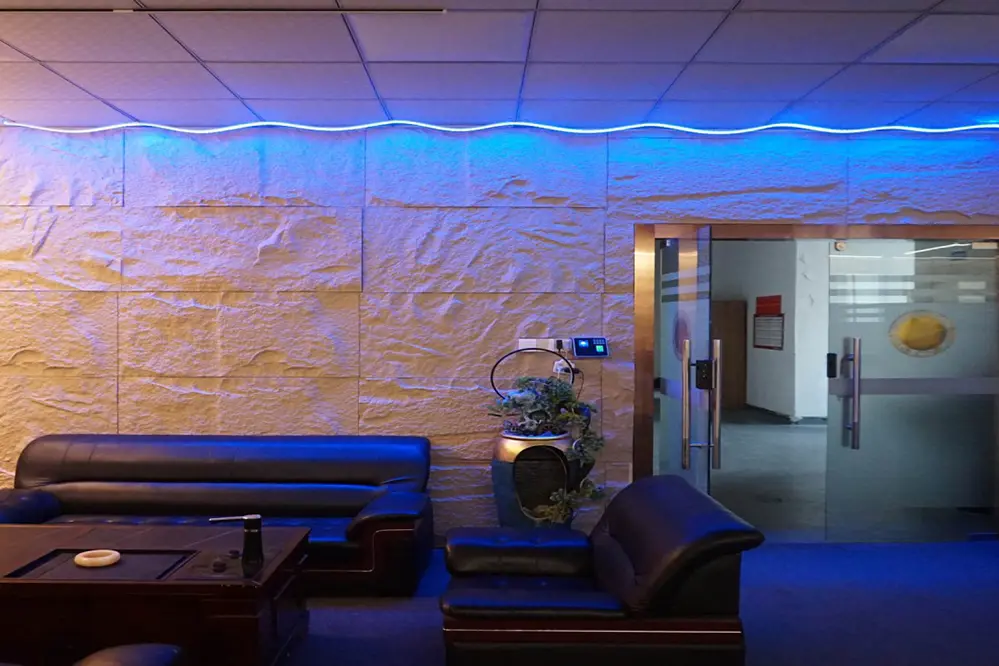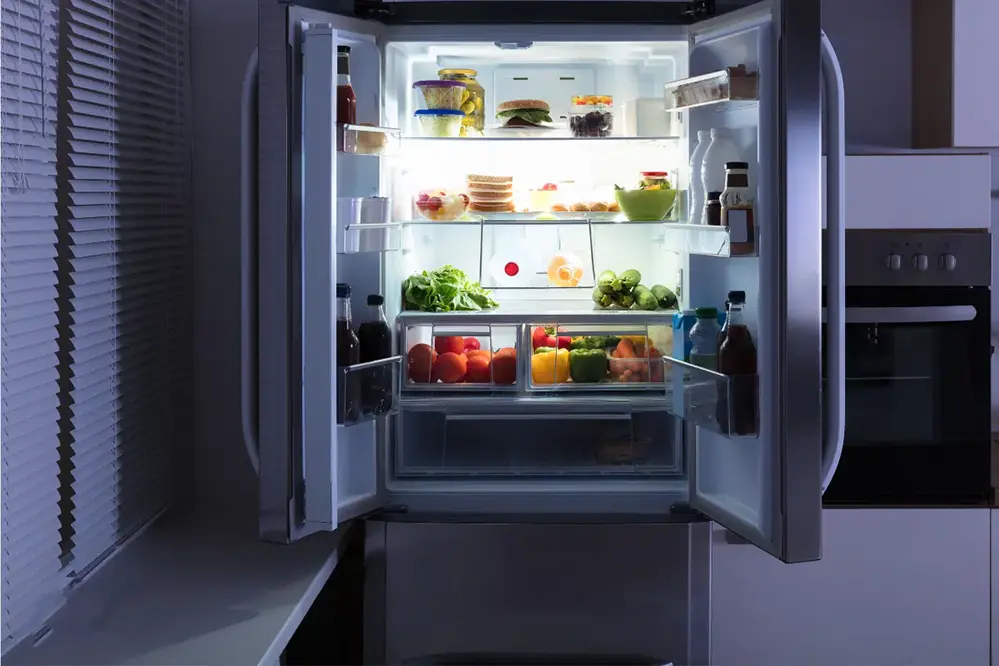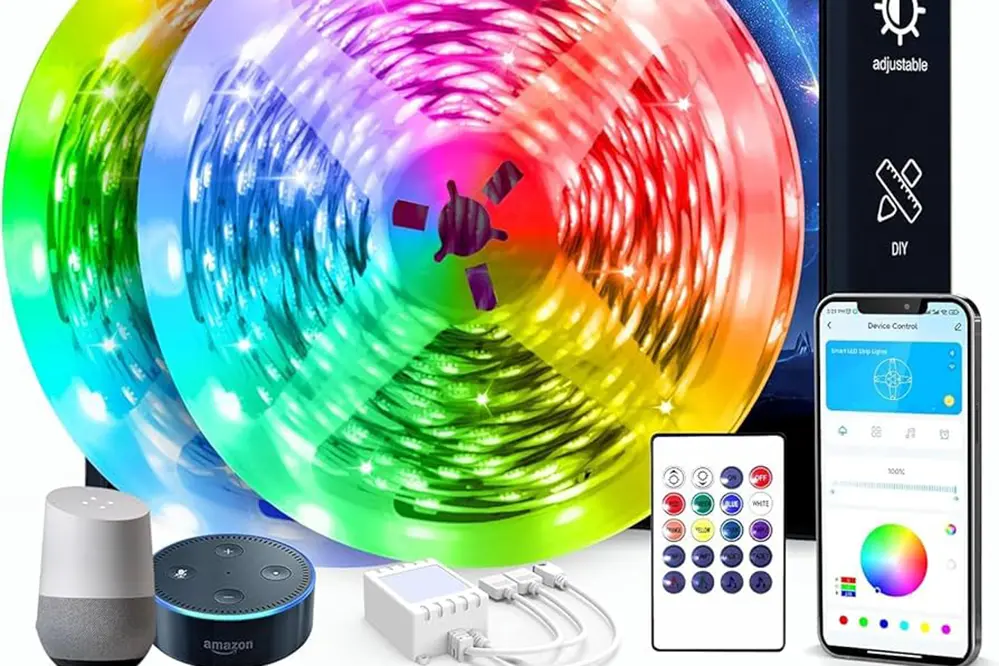Are you wondering if you can reuse LED strip lights for your next project? You’re in the right place. With years of expertise in sustainable lighting solutions, I am here to guide you through the possibilities and practicalities of reusing these versatile lights.
LED strip lights can be reused by carefully removing them from their original location, ensuring the adhesive backing is intact or replaced, and reapplying them to a new surface. This process allows for creative repurposing while maintaining functionality.
Discover innovative ways to repurpose your LED strip lights and learn essential tips for safe removal and reinstallation. Let’s explore how to make the most of your lighting investment with the flexibility of repurposing LED strip lights.
Benefits of Reusing LED Strip Lights
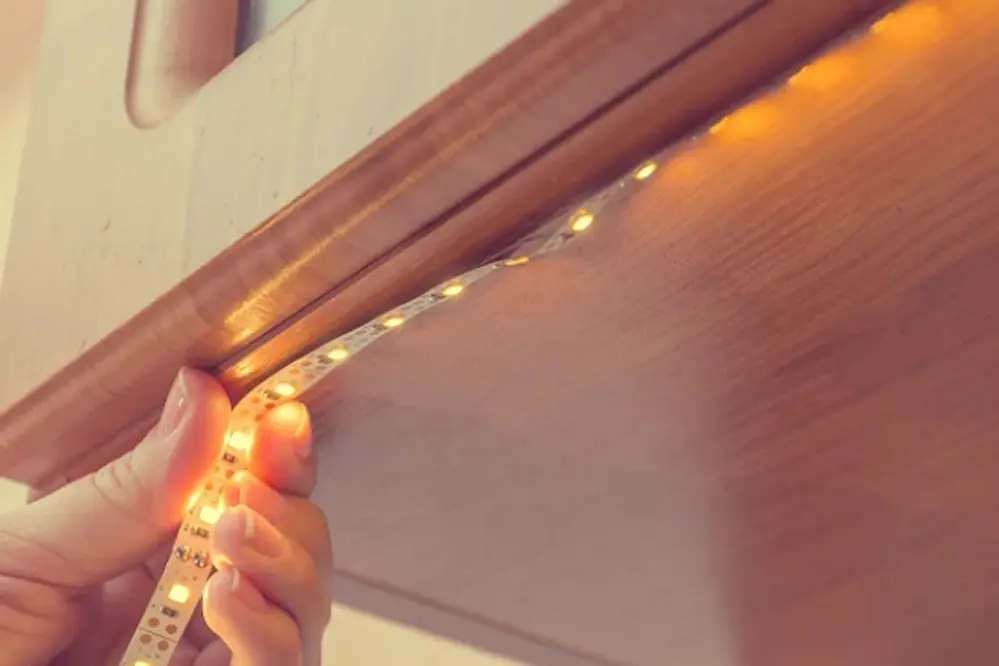
Thriving with sustainability offers numerous rewards.
One of the standout benefits of reusing LED strip lights is reducing waste. This practice contributes to a more sustainable future by minimizing the number of discarded materials entering landfills. Remarkably, reusing LED strips can also be a rewarding exercise in creativity as they inspire numerous innovative uses in various applications.
Reducing waste is only the beginning.
The economic benefits are equally compelling – not only does reusing LED strip lights save you money on purchasing new fixtures, but it also curtails long-term operational expenses through energy-efficient solutions and energy savings.
By embracing the practice of reuse, you’re concurrently supporting environmental stewardship and igniting your creative spark. Imagine the impact when individuals widely adopt this mindset in 2023 and beyond, transforming small actions into profound environmental advancements. Your commitment not only fortifies a brighter, eco-conscious future but also fosters sustainable progress, illuminating pathways for generations to come.
Assessing Your LED Strip Lights’ Condition
Before creatively reimagining the placement of your LED strip lights, the first step is assessment—ensuring they are still capable of reliable performance for your next project.
Unplug and carefully inspect the LED strip.
Check for any physical signs of wear, including cracks, fraying wires, or loose connections that may indicate a need for repair or full replacement. This preliminary examination ensures your setup is both functional and safe.
The subsequent stage involves powering on the lights to evaluate their visual output. Ensure all sections illuminate uniformly to confirm that no LEDs are faulty. If any segments appear dull or flicker, consider additional testing. In some cases, adjustments and simple repairs can restore optimal operation, enabling a seamless reuse of your LED strip lights.
Proper Removal Techniques
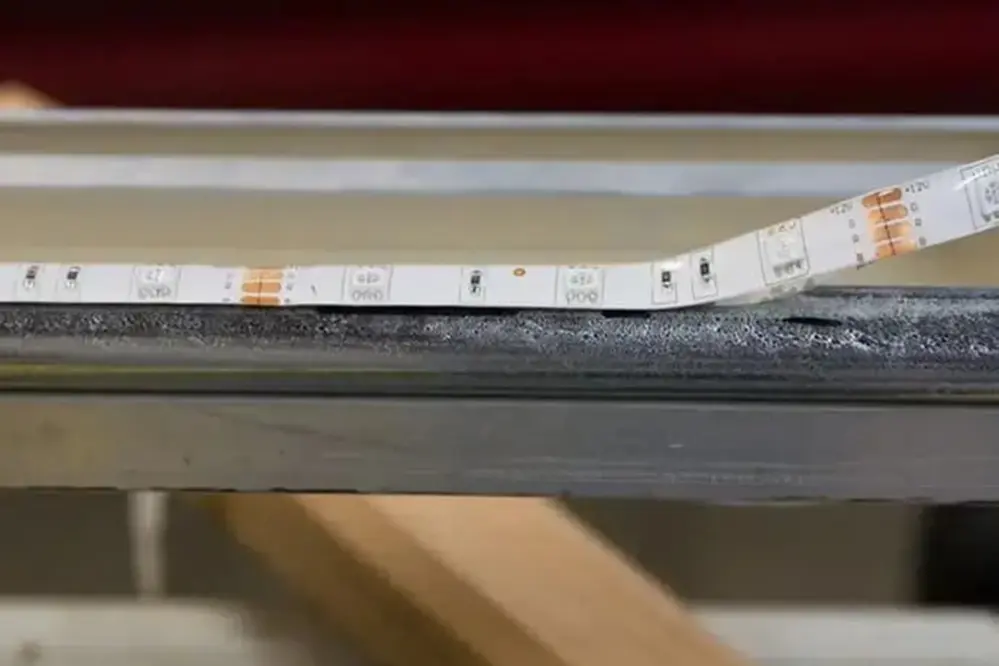
When removing LED strip lights, a method of meticulous detachment, rather than haste, is crucial. Gently peeling the strip away helps prevent damage, ensuring each adhesive layer remains as intact as possible, ready to embrace a new surface where it can continue to shine.
To facilitate the clean removal of a LED strip, consider using a “release agent.” These can be in the form of a gentle heat, such as from a hairdryer, which effectively loosens the adhesive. By doing so, the integrity of the LED strip remains preserved, minimizing risk of tearing or damaging the strip’s circuit, ultimately allowing for a smooth transition from one location to another.
Disconnect Power Safely
Before beginning the disconnection process, a matter of paramount importance, ensure that every power source is deactivated. Doing so safeguards both your equipment and personal well-being from potential hazards.
A controlled environment allows for a “contact-free” disconnection. Make use of a circuit breaker or unplug from the wall socket, guaranteeing no stray currents interfere during handling.
Powering off the source enhances electrical efficiency and minimizes wear on high-tech devices.
Safety measures extend to avoiding shorts by checking for residual electricity in the system. This can be done using a voltage tester, confirming the wires are no longer active. When power disconnection is thorough, peace of mind accompanies the task of handling LED strip lights, knowing safety and efficiency are at the forefront of every move.
Peel Off without Damage
Peeling off your LED strip lights without causing harm is entirely achievable with the right techniques.
- Gently loosen the adhesive by warming it with a hairdryer on a low setting.
- Utilize a plastic spatula to lift the corners, reducing the risk of tearing.
- Move slowly and consistently, ensuring even pressure throughout the process.
- Avoid sharp tools to prevent accidental cuts or damage to the strip.
By employing these methods, you maintain the integrity of both the LEDs and the surface they’re attached to.
This careful procedure ensures your LED strip lights are ready for reuse, promising sustainability and creativity in future projects.
Reinstallation Preparation
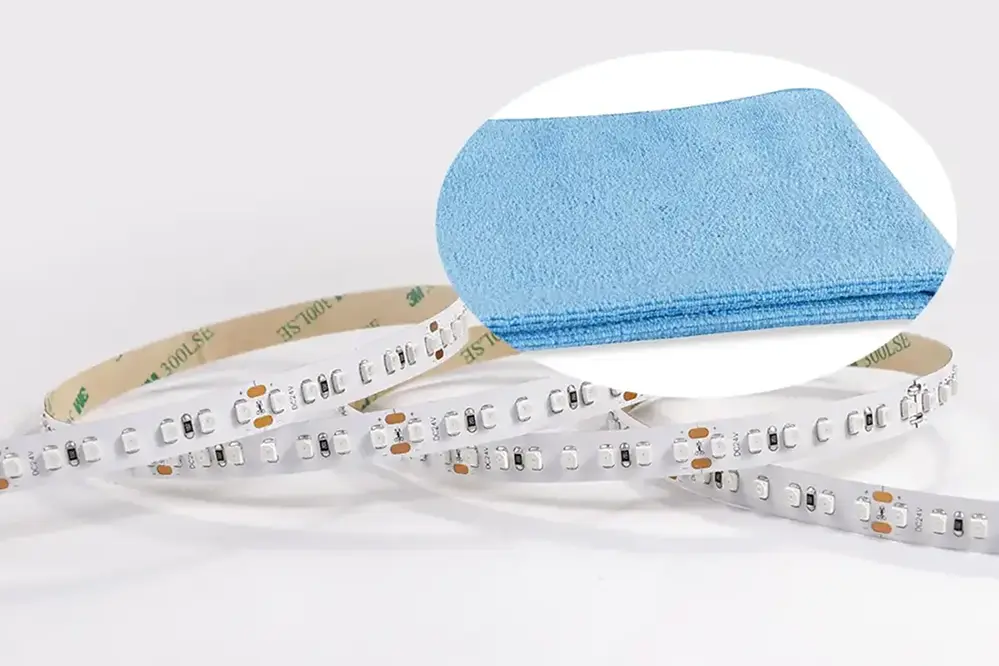
Embarking on the journey of reusing LED strip lights starts with mindful groundwork. First, gather your essential tools: scissors, adhesive backing, measuring tape, and a clean surface for effortless application.
To facilitate an efficient reinstallation, ensure the new surface is free from dust or debris; this allows for optimal adhesion. With preparation, your LED strip lights can be seamlessly reapplied.
The words “reuse” and “repurpose” thus become synonymous with the ‘creative reinvention’.
Clean Surfaces for Reuse
Ensuring a clean surface is imperative for the successful reuse of LED strip lights, optimizing their adhesion and performance.
- Thorough Dusting: Remove all dust particles using a microfiber cloth.
- Mild Cleaning Agents: Utilize gentle cleaning solutions that don’t leave residues.
- Dry Completely: Ensure the surface is fully dry to prevent slippage.
- Smooth Surface: Verify that the area is free of any texture variations or irregularities.
A pristine surface protects the integrity of the adhesive backing, maximizing LED functionality.
By preparing adequately, you enhance the longevity and effectiveness of your LED strip lights’ second application.
Check for Adhesive Residue
Before reusing LED strip lights, check for any leftover adhesive that could complicate reinstallation.
- Visual Inspection: Examine the back of the LED strips for sticky remnants.
- Use Alcohol Wipes: Alcohol wipes can effectively remove persistent adhesive.
- Gentle Scrubbing: A soft brush may help loosen stubborn residues without damaging the strips.
- Adhesive Removers: Specialized solutions can dissolve tough adhesives safely.
Clearing adhesive residue ensures a clean and effective reattachment. This keeps your project on track for success.
A meticulous approach not only safeguards the integrity of the strips but also enhances adhesion on the new surface. Your creativity will truly shine through!
Best Practices for Reusing LED Strip Lights
When reusing LED strip lights, attention to preparation is paramount. Ensure the strips are clean, fully functional, and free of obstructions, as these conditions will ultimately lead to the bright, long-lasting, and environment-conscious use, including the recycling, of these versatile lighting solutions.
Testing each strip before reuse confirms the power connections are intact and ready for seamless functionality. This careful verification catalyzes a smooth transition to their next illuminating role.
Use Proper Connectors
Employing the right connectors dramatically simplifies the reuse of LED strip lights, transforming a complex endeavor into a manageable task. These connectors act as the essential bridge between segments.
Learning how to select the appropriate connectors substantially enhances your project’s outcomes.
Standard connectors, tailored precisely for the various LED strip types, safeguard circuits (preventing shorts effectively) and ensure efficiency.
These connectors serve not only to extend LED strip lights but also to create customized lighting designs, reflecting your unique vision effortlessly.
Selecting connectors involves considering the required wattage, guaranteeing they can handle the current and prevent overheating, which bolsters safety and boosts performance.
Ultimately, with the right connectors, there’s no limit to creativity and innovation. Properly connected lights shine so brightly, lending an exceptional quality to your projects.
Test LEDs before Reinstallation
Before reinstalling, ensure all LED strip lights are fully functional to avoid unnecessary work later and maximize efficiency.
Testing involves connecting the strip lights to a temporary power source and observing every segment. This straightforward check helps pinpoint any sections which might need replacement before the strips are reinstalled. Such proactive measures not only save time but also enhance the success rate of your lighting projects, ensuring everything works seamlessly.
Moreover, this process verifies the integrity of connectors and wires. Any discrepancies observed—be it flickering lights or sections that remain dark—can be addressed promptly, averting potential issues that could arise during or after installation.
Meticulous testing isn’t just about functionality; it’s also about preserving the vibrant aesthetics of your lighting design. By ensuring each LED is operating at its best, you guarantee the lights will exhibit their intended brilliance, transforming spaces with impeccable luminescence. Confidently undertaking this step empowers you to use the LED strip lights to their fullest potential, crafting environments that inspire and captivate.
Common Reuse Mistakes to Avoid
First and foremost, avoid hasty removal of the LED strip lights. Taking the time to carefully detach them ensures longevity.
Inadequate cleaning of the adhesive surface is a frequent oversight. This results in uneven adherence when reapplying the strip, potentially causing damage.
Overbending during storage or reinstallation can compromise the strip’s structure. Gentle handling preserves the integrity of the internal circuitry and prevents breakage.
Neglecting to test the LED strip after reinstallation is a common error. Confirm that all connections are secure and functioning before finalizing any setup.
By sidestepping these pitfalls, you can effortlessly reuse your LED strips.
Creative Ways to Reuse LED Strip Lights
LED strip lights offer both versatility and creativity, serving as perfect tools for enhancing any living space with vibrant illumination.
For instance, in home decorating, LEDs can transform a mundane living room into a lively gallery, casting vibrant light across your artwork or illuminating bookshelves for an enticing visual effect. This simple addition can elevate the ambiance of a room from ordinary to extraordinary, encouraging a radiant and welcoming atmosphere.
Additionally, they can enhance any workspace with consistent lighting. By embedding LED strips underneath cabinetry, you achieve uniform lighting that reduces shadows and fosters productivity in both kitchen areas and home offices.
Outdoors, LED strips effortlessly encapsulate spectacular lighting possibilities, such as illuminating garden pathways or accentuating architectural features with subtle brilliance. These straightforward enhancements add layers of intrigue to outdoor spaces, inviting tranquil evenings and stimulating conversations under shimmering lights.
Environmental Benefits of Reusing
Reusing offers numerous environmental advantages.
When you opt to reuse LED strip lights, you contribute to reducing electronic waste. This small decision has rippling effects, minimizing the need for manufacturing new products, which is often linked to excessive carbon emissions. Additionally, extending the life of your LED strips decreases demand for raw materials crucial in LED production.
The process of reusing keeps valuable components out of overcrowded landfills.
Choosing to reuse aligns with – if not strengthens – the global push toward sustainable practices by keeping valuable components out of landfills and relieving some of the pressure on our planet’s strained resources.
Your commitment to reusing LED strip lights might seem like a minor adjustment, but collectively, it’s part of an inspiring transformation toward environmental stewardship. Imagine the possibilities — as more individuals embrace reuse, we pave the way for a brighter, ecologically balanced future. Such concerted efforts nurture not only our surroundings but also enrich our legacy for generations to come.
Comparing Reuse vs. New Purchase
When deciding whether to reuse LED strip lights or buy new ones, consider the environmental and economic impacts.
Reusing LED strip lights is a commendable choice. It allows you to maximize their lifespan, decreasing waste and promoting sustainability. Moreover, it provides a cost-effective alternative compared to purchasing new LED lights, which may impose unnecessary financial burdens. By opting to reuse, you’re supporting a cycle of repeated use, diminishing resource depletion, and reducing greenhouse gas emissions.
Additionally, reusing reduces the hassle of replacing functioning LEDs prematurely. You maintain the desired ambiance without the redundant effort and expense required with new installations. It’s an ideal path for those who value consistent lighting quality and seek to minimize interruptions associated with lighting changes.
Ultimately, choosing to reuse represents a dedication to enhanced resource efficiency and long-term economic savings. Though new lights may offer slightly updated technology or features, the benefits of extending your LED strip lights’ lifecycle can yield substantially greater rewards. This approach aligns with a vision of continuous improvement, inspiring others to consider the profound potential of sustainability.
Cost-Effectiveness of Reusing LED Strip Lights
In today’s sustainability-focused world, reusing LED strip lights can be a strategic financial decision with considerable benefits.
The initial investment in high-quality LED strip lights is a worthwhile endeavor, given their durability and energy efficiency. By repurposing existing lights, you avoid the costs associated with purchasing new ones and circumvent additional installation fees. This approach not only ensures consistent illumination but also harnesses the intrinsic long-term savings linked to reduced utility bills.
Remarkably, these cumulative savings extend beyond mere electricity costs. In refurbishing your space with reused LED strips, you also sidestep the frequently overlooked expenses of disposal and new packaging, further maximizing your financial efficiency.
Moreover, this conscious decision to reutilize not only reinforces your commitment to fiscal prudence but also echoes broader economic principles that favor sustainability over unnecessary consumption. By effectively prolonging the operational life of your LED strips, you contribute to a culture of mindful usage and inspire a shared responsibility towards our planet’s resources.
Troubleshooting Common Issues After Reuse
When reusing LED strip lights, various issues might arise that challenge your creative and technical prowess.
Firstly, dim lighting, an all-too-common problem, can often occur due to a weakened power supply, insufficient voltage, or damaged connectors. Ensuring your power supply is robust enough and that all connections are intact will be crucial to overcoming any flickering or non-uniform brightness that might hamper the performance of your reused lights.
Occasionally, you may encounter a problem with sections that don’t light up. In addressing these instances, ensure that each segment of the strip is properly connected and receiving adequate power, as loose connections or minor misalignments can significantly affect optimal functionality of your lights.
Lastly, if troubleshooting reveals issues in adhesive effectiveness caused by repeated use, consider using new, high-quality double-sided tape or mounting clips to secure the strips. This strategic step will not only reintroduce the resilience and stability you seek but also foster a renewed sense of harmony as your space radiates the intended illumination once more.
Conclusion
Reusing LED strip lights through careful planning and maintenance transforms them into sustainable assets, providing both economic and environmental advantages. By addressing common challenges such as adhesive wear and connection issues, you can significantly extend their lifespan. This approach not only enhances the functionality of your lighting solutions but also aligns with a commitment to a more sustainable lifestyle. The benefits of reusing LED strip lights are manifold, offering a cost-effective way to illuminate your spaces while reducing waste and conserving resources.
Embracing the journey of reusing LED strip lights requires innovation, resourcefulness, and a dedication to efficiency. While initial adjustments and diligence are necessary, the rewards are substantial—a brighter, more sustainable environment that reflects your vision and efforts. This endeavor empowers you to contribute positively to a sustainable future, ensuring your spaces glow with creativity and responsibility. By choosing to repurpose your LED strip lights, you are taking a significant step towards a greener world, demonstrating the impact of thoughtful reuse in modern living.
For those looking to maximize the potential of their LED strip lights, partnering with a trusted manufacturer can make all the difference. Unitop, a professional Chinese manufacturer of LED strip lights and LED neon strips, offers unparalleled expertise and quality products to meet your lighting needs. Whether you’re seeking guidance on reusing your existing lights or exploring new options, Unitop provides innovative solutions tailored to your requirements. By choosing Unitop, you ensure access to high-quality, sustainable lighting products that enhance your spaces while supporting your commitment to environmental responsibility. Reach out to Unitop today and illuminate your world with confidence and creativity.

